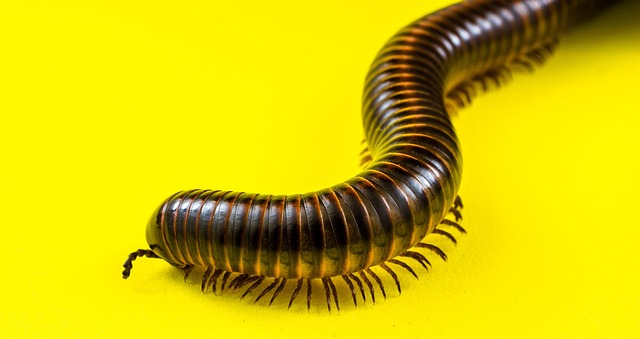Millipedes, despite their tiny size, can cause big problems for homes and businesses. This introduction explores advanced technologies designed for efficient millipede extermination, a critical aspect of professional pest control. While traditional methods have long been the go-to, innovative solutions are transforming the landscape of millipede management. From behavioral understanding to cutting-edge tech, this article delves into effective strategies, including case studies showcasing successful professional millipede removal.
Understanding Millipedes: Behavior and Habitats
Millipedes are fascinating yet often unwelcome visitors to both indoor and outdoor spaces. Understanding their behavior and habitats is crucial for effective professional millipede removal. These creatures prefer damp, dark environments, making their habitats diverse—from lush gardens and forests to cracks in walls and basements. They are particularly drawn to organic matter, such as leaves, grass clippings, and compost piles, which serve as both food source and shelter. Millipedes are nocturnal, often emerging at night to forage for food, making them less visible during the day but not necessarily less abundant. Their ability to squeeze into narrow crevices makes them adept at hiding and multiplying unnoticed until their presence becomes a significant problem.
Traditional vs Advanced Extermination Methods
In the realm of millipede extermination, traditional methods have long been the go-to solution for many homeowners and pest control professionals alike. These conventional techniques often involve chemical pesticides that target these creatures directly. However, as time has progressed, a shift towards advanced technologies for professional millipede removal has emerged due to growing environmental concerns and the need for more effective, yet eco-friendly, solutions.
Traditional pesticide applications may offer quick relief but often fail to address the root causes of millipede infestations. In contrast, modern advancements in technology have given rise to innovative tools like heat treatments, vacuum systems, and biological agents. These advanced methods not only provide efficient millipede control but also ensure a more comprehensive and lasting solution. By employing these cutting-edge techniques, professionals can effectively eradicate existing populations while preventing future invasions, ensuring a safer and more sustainable environment for both residents and the ecosystem at large.
Innovative Technologies for Effective Control
In the realm of professional millipede removal, innovative technologies are revolutionizing pest control methods. Traditional methods often involve chemical pesticides, which can be harmful to both the environment and non-target organisms. However, advancements in technology offer safer and more efficient alternatives for managing millipede infestations. One such game-changer is the use of heat treatment. This method employs specialized equipment to deliver targeted heat, which disrupts the life cycles of millipedes, making it an eco-friendly solution for both residential and commercial spaces.
Additionally, modern surveillance systems and robotics are being utilized for early detection and precise removal. Robotic devices equipped with advanced sensors can identify and eliminate millipedes in hard-to-reach areas, reducing the need for invasive inspections. These technologies not only enhance the effectiveness of millipede control but also minimize the risks associated with traditional pest management practices. As a result, professional services now offer more sustainable and efficient solutions to meet the growing demand for millipede removal.
Case Studies: Success Stories in Professional Millipede Removal
In the realm of professional millipede removal, several case studies stand out as success stories, showcasing innovative approaches and advanced technologies that have transformed the way experts tackle these persistent pests. These real-world applications highlight the effectiveness of combining traditional methods with cutting-edge tools to ensure complete and long-lasting solutions.
One notable example involves a large commercial facility plagued by millipedes. By employing a combination of heat treatment, targeted chemical applications, and advanced monitoring systems, professionals were able to eradicate the infestation effectively. This integrated approach not only eliminated the existing problem but also provided a proactive strategy for preventing future infestations. Such successful cases emphasize the importance of tailored solutions and the continuous evolution of professional millipede removal techniques.
